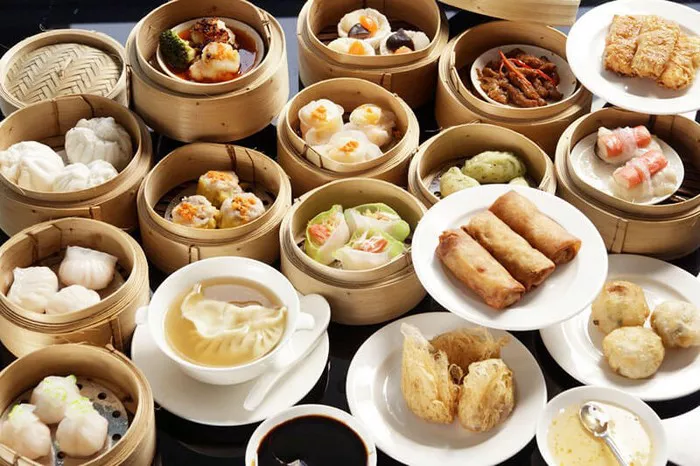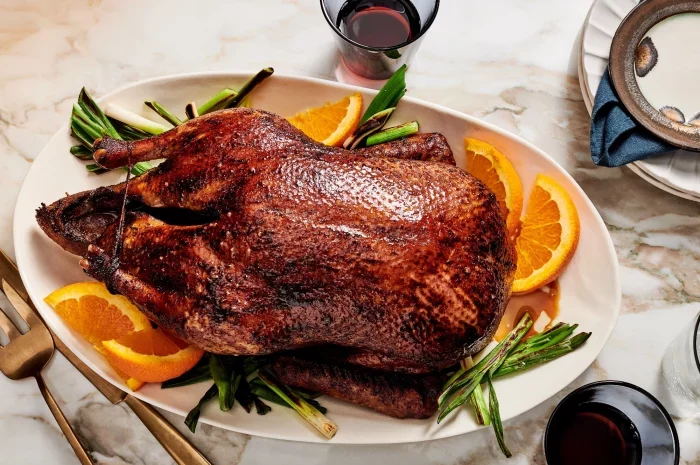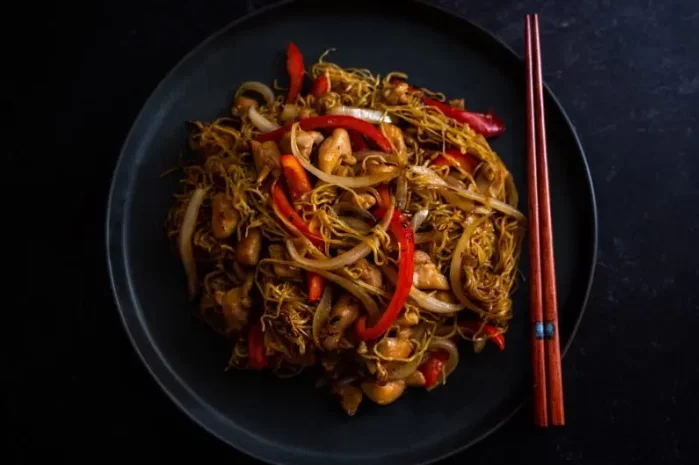Chinese cuisine is vast and diverse, reflecting the country’s long history, rich culture, and varying regional flavors. A typical Chinese meal can vary depending on the region, ingredients available, and the occasion, but it generally shares some common features. This article will explore the typical structure of a Chinese meal, including key components, common dishes, and how meals are served.
Structure of a Typical Chinese Meal
A traditional Chinese meal is usually made up of several parts, each offering different tastes and textures. The most common components include rice, vegetables, meat, and soup. Meals are usually shared among family members, and everyone eats from the same dishes using chopsticks.
1. Rice or Noodles as the Base
In most Chinese meals, rice or noodles act as the central carbohydrate component. Rice is particularly important in southern and eastern China, where it is served with almost every meal. In contrast, in northern regions, wheat-based foods like noodles and dumplings are more common.
Steamed Rice: The most common type of rice in Chinese meals is steamed white rice. It is often served as the base, and other dishes are eaten alongside it. The rice absorbs the flavors from the other dishes, creating a balanced and satisfying meal.
Noodles: Noodles are a common alternative to rice in many regions, especially in the north and northwest. They are often stir-fried or served in soups, and come in many forms, from thin rice noodles to thick wheat-based varieties.
2. Vegetables
Vegetables are an essential part of any Chinese meal. They add color, texture, and important nutrients to the meal. Vegetables are usually stir-fried, steamed, or served in soups.
Stir-Fried Vegetables: Stir-frying is a quick and common method of cooking vegetables in Chinese cuisine. Ingredients like bok choy, Chinese cabbage, snow peas, and mushrooms are often stir-fried with garlic, ginger, and soy sauce.
Pickled Vegetables: In addition to fresh vegetables, pickled vegetables are a common side dish. They are usually made with ingredients like cabbage, radishes, and carrots. Pickling adds a tangy flavor and helps balance the meal.
3. Meat and Protein Dishes
Meat and protein dishes form the centerpiece of many Chinese meals. Chicken, pork, beef, and duck are the most commonly used meats, but fish and seafood also play important roles in Chinese cooking.
Poultry: Chicken is widely used in Chinese cuisine. Dishes like Kung Pao Chicken (stir-fried chicken with peanuts) and Soy Sauce Chicken (braised chicken with soy sauce) are popular. Duck is also often served, especially in more elaborate meals like Peking Duck.
Pork: Pork is another staple of Chinese cuisine, often cooked in a variety of ways. Sweet and Sour Pork and Twice-Cooked Pork are two famous dishes. Pork is also used in dumplings and buns, such as the popular Char Siu (Chinese BBQ pork).
Beef: Beef is commonly stir-fried in dishes like Beef and Broccoli or Mongolian Beef, and it’s sometimes served in soups or stews.
Fish and Seafood: Fish is an important part of Chinese meals, especially during celebrations. Steamed Fish with Ginger and Scallions is a classic dish, often served whole with the head and tail intact to symbolize completeness. Shrimp, crab, and clams are also common ingredients in stir-fries and soups.
4. Soups and Broths
Soup is an integral part of Chinese dining. It is usually served at the start of the meal or between dishes to cleanse the palate. Chinese soups are often light and clear, made with simple ingredients like chicken, pork, vegetables, and herbs.
Hot and Sour Soup: This flavorful soup is a blend of tangy and spicy flavors, typically made with ingredients like mushrooms, tofu, bamboo shoots, and vinegar.
Wonton Soup: A comforting soup made with delicate dumplings filled with seasoned pork or shrimp. It is often served as an appetizer.
Clear Broths: In many meals, a simple broth made from simmered meat or bones provides a light and nourishing base. These broths are often served with greens or noodles.
5. Sauces and Condiments
Chinese cuisine is known for its rich and varied use of sauces. Soy sauce, hoisin sauce, oyster sauce, and chili paste are some of the most common condiments. These sauces are used to marinate meats, flavor stir-fries, or serve as dipping sauces.
Soy Sauce: One of the most widely used ingredients, soy sauce is often added to dishes for a salty, umami flavor. It can be light or dark, with dark soy sauce being sweeter and thicker.
Hoisin Sauce: This sweet and savory sauce is made from fermented soybeans and used in many dishes, particularly stir-fries and as a glaze for meats.
Oyster Sauce: Made from oysters, this sauce is often used to enhance the flavor of vegetables and stir-fried dishes.
6. Dim Sum
In addition to regular meals, dim sum plays an important role in Chinese dining culture, especially in southern China. Dim sum refers to a wide variety of small dishes, often served in steamer baskets or on small plates.
Dumplings: Dumplings are a favorite form of dim sum. These can be steamed, boiled, or fried. Jiaozi (dumplings filled with pork or vegetables) are a classic choice.
Buns: Char Siu Bao are steamed buns filled with BBQ pork. These fluffy buns are a popular dim sum dish.
Spring Rolls: These crispy fried appetizers are filled with vegetables, pork, or shrimp.
7. Tea
Tea is an essential drink in Chinese culture, often served alongside meals. Green tea is the most common, but oolong tea and black tea are also enjoyed. Tea is known for its refreshing properties and is believed to aid digestion.
8. Sweets and Desserts
Chinese meals typically don’t end with heavy desserts, but light and refreshing sweets are sometimes served to round off the meal.
Fruit: Fresh fruit, like oranges, melons, and lychees, is often served as a light and healthy dessert.
Sesame Balls: Jian Dui, or sesame balls, are a popular dessert made from glutinous rice flour, filled with sweet red bean paste, and deep-fried to a crispy golden brown.
Egg Tarts: A rich, sweet pastry filled with a smooth egg custard, egg tarts are a beloved treat, especially in Cantonese cuisine.
Regional Variations in Chinese Meals
China’s diverse geography leads to many regional differences in food, with each area having its own distinct culinary style.
Cantonese Cuisine (Southern China): Known for its light, fresh flavors, Cantonese food often includes stir-fries, soups, and steamed dishes. Dim sum is a hallmark of Cantonese cuisine, and dishes like Sweet and Sour Pork and Steamed Fish are popular.
Sichuan Cuisine (Southwest China): Famous for its bold, spicy flavors, Sichuan food uses a lot of chili peppers and Sichuan peppercorns to create a numbing, tingling sensation. Dishes like Kung Pao Chicken and Mapo Tofu are iconic examples of Sichuan cooking.
Shandong Cuisine (Northern China): Shandong food is known for its emphasis on fresh ingredients and seafood. Braised Fish and Peking Duck are two examples of this cuisine.
Jiangsu Cuisine (Eastern China): Known for its use of sugar and soy sauce in cooking, Jiangsu cuisine includes dishes like Sweet and Sour Fish and Braised Pork Belly.
Xinjiang Cuisine (Northwest China): Heavily influenced by Central Asian flavors, Xinjiang cuisine features lots of lamb and beef, as well as flatbreads and pilafs. Lamb Kebabs and Hand-Pulled Noodles are popular dishes from this region.
Eating Etiquette
In China, meals are often shared family-style, with everyone eating from the same dishes. It is considered polite to offer food to others before serving yourself. It is also common to leave some food on your plate as a sign that you are satisfied and not hungry. Chopsticks are used to eat most dishes, and there are specific rules about not sticking them upright into a bowl of rice, as it resembles a funeral ritual.
Conclusion
A typical Chinese meal is an exciting and balanced combination of rice or noodles, vegetables, meat, and soup. The meal structure focuses on shared dishes that provide a variety of textures, colors, and flavors. Regional variations add even more diversity to Chinese cuisine, making it one of the most rich and varied in the world. Whether it’s a simple family meal or an elaborate banquet, Chinese meals are designed to bring people together and offer a harmonious balance of tastes.
Related topics:

























